Strategic victory for the army of Yudenich near Erzurum
The Supreme Commander’s headquarters did not set offensive tasks for the 1915-1916 winter period to the headquarters of the Caucasian Army. The army was supposed to strengthen its defensive positions. In the autumn and winter of 1915, relative calm was established on the Caucasian front. The largest operation was the sending in November of General N.N. Baratov in western Persia (Hamadan operation). Russian troops operated successfully in Persia, securing the left flank of the Caucasian army. However, due to the introduction of troops into Persia, the Caucasian army now had to keep the front in 1500 km. Nikolay Yudenich created an army maneuverable reserve and paid great attention to the engineering equipment of the positions. The troops were provided with provisions and winter clothing. Sapper units repaired roads, laid new ones.
However, it was not possible to survive the winter. Bulgaria’s entry into the war on the side of the powers of the Central Bloc changed the strategic situation in favor of Turkey. Through the Bulgarian territory in the Ottoman Empire began to flow weapons, ammunition and ammunition for the Turkish army. There was a direct connection between Berlin and Istanbul. In addition, the Ottoman army, unexpectedly for allies with superiority in navy and the saturation of troops with modern weapons, destroyed the plans of England and France to capture the straits. The Dardanelles (Gallipoli) operation, which was carried out from February 19, 1915 to January 9, 1916, ended in complete defeat. In geopolitical and military-strategic terms, this victory of Turkey was even beneficial to Russia, because the British were not going to give in to the straits of St. Petersburg and undertook this operation to get ahead of the Russians. On the other hand, the Ottoman command was given the opportunity to transfer the liberated troops to the Caucasian front.
It is clear that the commander of the Caucasian army, Nikolai Nikolayevich, who has strategic thinking, could not but respond to this event. It was impossible to wait for the gain of the enemy and his new attack. We had to go on the offensive ourselves. Thus was born the idea of breaking through the enemy front in the region of Erzerum and seizing this strategic fortress blocking the way to the internal regions of the Ottoman Empire. After the defeat of the 3 Army and the capture of Erzerum, Yudenich planned to occupy the important port city of Trabzon (Trabzon). The rate of the Supreme Commander agreed with the proposal of the headquarters of the Caucasian Army.
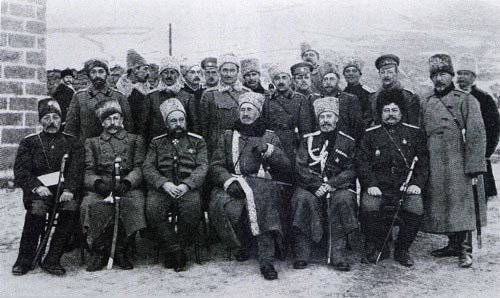
Grand Duke Nikolai Nikolayevich and General Yudenich with the ranks of the headquarters of the Caucasian Army.
Forces of the parties. Preparation of the operation. In December 1915, the Caucasian Army included about 130 infantry battalions, more than 200 hundred cavalry, 52 militia squads, 20 sapper companies, 372 guns, 450 machine guns and aviation detachment of 9 cars. In total, the Caucasian army included about 180 thousand bayonets and sabers. The 3rd Turkish army includes 134 thousand bayonets and sabers with 122 field guns and 400 guns of fortress artillery. According to Russian intelligence, the Caucasian army had a slight advantage in the infantry, but in the field artillery it exceeded the Ottoman army by three times, and in the regular cavalry by 5 times. The Ottoman army had 40 cavalry squadrons and up to 10 thousand irregular Kurdish cavalry divided into 20 detachments. However, this advantage had to be realized, the Ottoman command had a powerful trump card - Erzurum fortified area.
Erzerum was the most important fortress of the Ottoman Empire. It was a well-fortified "gate" to the Passinskaya valley and the valley of the Euphrates River. The fortress was the most important communication center of the region, important routes converged here: to Batum, to Olty and Ardagan, from the Euphrates roads ran north to Trebizond and Rize, and south to Mush and Bitlis. Erzerum (or Erzurum) was the main control center and rear base of the 3 of the Turkish army, the fortress was tied together by the Turkish front in the Caucasus, allowed to maneuver forces and reserves. At the same time, the fortress was a powerful bridgehead, relying on which, the Ottoman Empire could conduct offensive operations in the Caucasus.
Erzerum before was a powerful fortress. But with the help of German fortifiers, the Turks modernized the old fortifications, built new ones, and increased the number of artillery and machine-gun firing points. As a result, by the end of 1915, Erzerum was a huge fortified area, where old and new fortifications were combined with natural factors (difficult to pass mountains), which made the fortress almost impregnable. In order to get to the Passinskaya valley, it was necessary to take powerful Keprikey positions. Behind them the path in a narrow place protected the fortress Hasan-Kala. From the north direction, the fortified settlements of Tortum, Veyichihas, Shaklyary, Kyzyl-Kilisa and Kosh closed the path to the fortress.
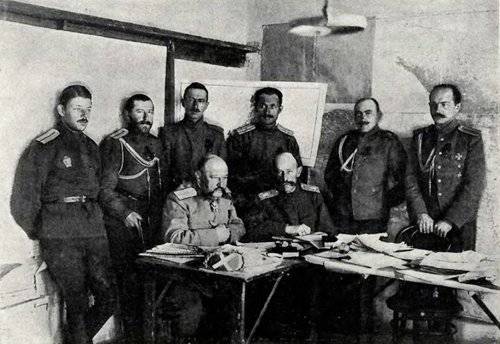
For the development of the Erzerum operation.
It was necessary to advance in the conditions of a difficultly predictable mountain winter. Nikolay Nikolayevich decided to break through the enemy defenses in three directions at once - Erzurum, Oltinsky and Bitlis. Three corps of the Caucasian army were to take part in the attack: the 2 and the Turkestan, the 1 and the 2. The main blow was struck in the direction of the village Kepri-Kay. Offensive prepared carefully. Each fighter received valenki, warm footworms, a sheepskin coat, quilted cotton trousers, a hat with a dangle button, a set of mittens and an overcoat. In case of the need for covert movement, the troops received a significant amount of white camouflage and white covers on their hats. The personnel of the 1 Caucasian Army Corps, which was to attack at high altitude, so that the sun would not blind its eyes, were given goggles. Taking into account that the area of the upcoming battle was mostly treeless, and the supply of firewood was difficult, each soldier had to carry two logs with him to cook food and heat at night. In addition, in the equipment of an infantry company, thick poles and boards for the device for crossing non-freezing mountain streams and rivulets became mandatory. He learned a lot from the sad experience of the Ottoman soldiers, during the Sarikamish operation hundreds of Turkish soldiers got frostbite on their feet due to wet shoes.
At the same time, much attention was paid to meteorological observation. The meteorological department, which served as inspector of the army artillery, General Slyusarenko, constantly analyzed the state of the weather, and issued its recommendations. By the end of the year, 17 meteorological stations were deployed in the army’s location zone. In the army rear big road construction unfolded. From Kars to Merdeken from the summer of 1915, a narrow-gauge railway mounted on horseback was operated. A narrow-gauge railway was built from Sarykamysh to Karaurgan on steam traction. Army transports were replenished with pack animals - horses and camels.
Measures were taken to preserve the secret regrouping of troops. Mountain passes marching replenishment passed only at night, with the observance of blackout. In the area where it was planned to make a breakthrough, they carried out a demonstrative withdrawal of troops — the battalions took them to the rear during the day and returned at night. In order to misinform the enemy, rumors were spread about the preparation of an offensive operation by the Van detachment and the Baratov Persian Expeditionary Corps, together with British troops. In Persia, large purchases of food were carried out - grain, livestock (for meat portions), fodder and camels for transportation. And a few days before the start of the Erzerum operation, the commander of the 4 Caucasian Infantry Division was sent an urgent unencrypted telegram. There was an “order” in it about the concentration of a division near Sarykamysh and the transfer of its troops to Persia. But only one regiment of the division was transferred to the border Julfa. Where he made a demonstrative daily transition.
Moreover, the army headquarters began to distribute leave to officers from the front, and also massively allow officer wives to come to the theater of operations on the occasion of the New Year holidays. Until the very last moment, the content of the planned operation was not disclosed to the downstream headquarters. A few days before the onset of the offensive, the exit of all persons from the frontline zone was completely closed, which prevented Omani agents from informing the Turkish command of the full combat readiness of the Russian army and its latest preparations.
As a result, the headquarters of the Caucasian Army outplayed the Ottoman command at the stage of preparing the operation, and the Russian attack on Erzerum came as a complete surprise to the enemy. The Ottoman command of the winter offensive of the Russian troops did not expect, considering that in the winter on the Caucasian front there was an inevitable operational pause. Therefore, the first echelons of the troops liberated in the Dardanelles began to be transferred to Iraq. Khalil Bey's corps was transferred there from the Russian front. In Istanbul, by spring, they hoped to crush the British forces in Mesopotamia, and then with all their might to attack the Russian army. The Turks were so calm that the commander of the 3 of the Turkish army in general went to the capital.
Offensive. December 28 1915, the Russian army launched an offensive. The 2 th Turkestan Corps under the command of General Przhevalsky struck first. But he was nearly stopped by the strong Turkish defense of Mount Gai-Dag. The strong fortifications of the enemy had to be taken by assault by the forces of two divisions. Turkish troops rushed to the counter. But, they did not expect the Russian offensive, therefore the Turkish command threw their units into the battle hastily and separately. The Turkestan Corps, repelling the counter blows of the enemy troops, continued to gradually move forward, gradually turning in the direction of Erzerum. Russian troops captured the enemy’s position at Kizil-Kilis, and then went to the Kara-Gübek fortress, which covered the Gurdzhibogaz passage into the Erzurum valley. The left flank of the Ottoman defense crushed. For the Turkish troops, there was a threat of the Russian troops entering the flank and rear of the Keprikei position. The Turkish command had to withdraw troops from the right flank of the defense and redeploy units to the north.
Two days after the 2 of the Turkestan corps, part of the 2 of the Turkestan and 1 of the Caucasian corps launched an offensive. In addition, the De-Witt’s 4 Caucasian Corps and the Lyakhov Primorsk Group with the support of the Batumi detachment of ships delivered auxiliary strikes. Yudenich wanted to thwart the possible transfer of enemy forces from one direction to another and the delivery of reinforcements to sea communications.
The Turks were desperately defended. I must say that in this war, in contrast to a number of other previous Russian-Turkish wars, Turkish troops fought well, valiantly and skillfully. Particularly stubborn fighting took place in the valley of the Araks. In Keprikeyskikh positions the Turks had the most resistant resistance. The most convenient routes to Erzerum followed the Araks valley. During the fighting, both sides suffered heavy losses and exhausted a significant part of the reserve forces.
Yudenich threw part of the forces from the Oltinsky and Erzurum directions to the Mergemir Pass. This decision paid off. The Ottoman command left this section of the front without proper attention. In a strong snowstorm, the Russian soldiers from the avant-garde units of General Voloshin-Petrichenko and Vorobyov broke through the enemy defenses. Yudenich threw the Siberian Cossack brigade of General Raddats into a breakthrough from his reserve. The Cossacks were not stopped by 30-degree frost in the mountains, nor by snowbound roads. Turkish defense collapsed and on the right flank.
The Turkish troops, being under the threat of encirclement and extermination, ran, burning along the way villages and their own warehouses. The 4-I Caucasian Rifle Division oppressed the enemy along the northern bank of the Araks, preventing them from gaining a foothold in new positions. A division bypass detachment under the command of Captain Sorokin in a night battle captured the outskirts of the Kelender fortress. The garrison, having considered that before it considerable forces of the opponent, capitulated. On January 5, the Siberian Cossack brigade and the 3 Black Sea regiment of the Kuban regiment that had pulled out ahead approached Hasan-Kala (Hasankala) fortress. The next day, the Cossacks defeated the Turkish rearguard. The turmoil in the Turkish troops is evidenced by the fact that the Cossacks captured about 2 thousand soldiers from the 14 various regiments that were part of the 8 divisions. 3-I Turkish army was already half crushed. 7 (19) January Russian troops took Hasan-kala, not allowing the enemy to recover. The jumbled parts of the Turkish divisions rolled back to Erzerum.
Storm Erzerum. Russian troops went directly to Erzerum. The army achieved major success, and the Grand Duke Nikolai Nikolayevich already wanted to give the order to retreat to the starting lines. Like, the task is completed - 3-I Turkish army defeated and will not be able to attack in the coming months. But General Yudenich convinced him of the need to take the seemingly unassailable fortress of Erzerum. The commander took all the responsibility on himself. Of course, it was a big risk, but the risk was thought out. According to lieutenant colonel B.A. Steifon, General Yudenich was distinguished by a great rationality of his decisions: “In fact, every courageous maneuver of General Yudenich was a result of a deeply thought-out and quite accurately guessed situation. And mainly spiritual setting. The risk of General Yudenich is the courage of creative imagination, the courage that is characteristic of only great commanders. ”
Yudenich understood that it was almost impossible to take the strongholds of Erzerum on the move. Although this decision, in view of the successful offensive and frustration of the Turkish troops during the retreat, seemed right. The preliminary calculations showed that it was necessary to conduct artillery preparation for the assault, with a significant expenditure of shells. Soldiers needed to replenish their ammunition. Marines already had to save ammo. Army reserves were located in Kars, and their delivery took time. Therefore, the assault was postponed in order to conduct preliminary training. Yudenich himself conducted a reconnaissance of the fortress and, having convinced of the power of its bastions, ordered the preparation of an assault.
In the meantime, the remains of the defeated 3 Turkish army continued to flow into the fortress. The Turkish garrison was about 80 battalions. Erzerum fortress, well protected by nature, was a whole fortified area, deployed front to the east. The total length of the Erzerum defensive positions was 40 km. Her most vulnerable spots were the rear contours. Through them, the fortress could be blocked, but before that it was necessary to break into the Erzurum valley.
Army squadron conducted reconnaissance near and far approaches to the fortress. Yudenich ordered the creation of assault detachments — the advanced infantry formations on the main axes were given guns, additional machine guns and engineer units. Soldiers were trained in assault on the heights in their rear. Russian troops dislodged enemy forces from the surrounding villages, approaching the nearest approaches to the Turkish fortifications. The 2 Turkestan and 1 Caucasian Corps took part in the assault, and the Siberian and 2 Orenburg Cossack Brigades were left in reserve. In total, the operation involved up to 60 thousand soldiers, 166 field guns, 29 howitzers and a heavy 16 mortar division of 152 mm caliber. The commander planned to break through the front of the enemy on the northern right flank and, having made a detour of the most powerful enemy fortifications, strike the fortress from the western, rear side. Other enemy defense sectors were also hit, so that the Ottoman command could not reinforce some sectors at the expense of others.
Russian troops launched an assault on Erzurum on 29 in January (February 11) in 1916. At 2 hours the artillery preparation began. At the beginning of the assault, Yudenich decided to deliver the brunt of the night, when the psychological stability of the Turkish soldiers to the battle greatly weakened. In 23 hours, Russian troops launched an assault on enemy positions. During the day of fierce fighting, the Russian troops captured the northern part of the Gurdzhibogaz passage and the fort Dalan-gez. The Turkish fort captured an assault detachment under the command of Lieutenant Colonel Pirumov. A bloody battle began for the fort Dalan-gez. At dawn 1 February, Turkish troops launched a counterattack, concentrating on this sector to 100 guns. The defenders of the fort were cut off from their own, and they began to run out of ammunition. Five Turkish attacks beat off rifle-machine-gun fire. The sixth attack was repelled in hand-to-hand combat, bayonets and butts. Even the wounded stood before the seventh attack of the Ottoman troops, and the enemy was again repelled in a bayonet battle. By the beginning of the eighth Turkish attack, which could be the last, the situation was saved by an unknown hero - under enemy fire, in the evening twilight, he was able to ride ammunition on donkeys. Turkish attack repulsed. Of the 1400 soldiers and commanders of the heroic 153 Infantry Regiment defending the fort, only about 300 soldiers remained in the ranks, and most of them were injured. At night, the fort garrison strengthened, the wounded were taken out.
On the same day - February 1, there was a radical change in the battle for Erzerum. For two days, the fighters of the assault groups of the 1 of the Turkestan Corps took one stronghold of the enemy after another, seizing one impregnable fort after another. Russian infantry went to the most powerful and last bastion of the enemy on the northern flank - Fort Taft. 2 (14) in February, Kuban squadrons and arrows of the Turkestan Corps took the fort. The entire northern flank of the Ottoman system of fortifications was hacked and Russian troops began to go out to the rear of the 3 Army.
The air reconnaissance reported on the withdrawal of troops from Erzerum. Ottoman commanders threw all their forces to defend the Deboya position. Then Nikolai Nikolayevich gave the order to transfer to the disposal of the commander of the Przhevalsky Turkestan Corps, the column of generals Voloshin-Petrichenko and Vorobyov, as well as the Cossack cavalry of Radacza. At the same time, the 1 Caucasian Corps Kalitina increased pressure from the center. The Turkish resistance was finally broken, the Russian troops rushed into the deep rear, still defended forts turned into traps. The Turkish units began to hurry to throw forts and fortifications. They did not defend Erzurum either. The remains of the 3 Army rushed to flight. At 5 in the morning hours of February 4 (16) advanced units entered Erzerum. Parts of the enemy garrison, those who did not have time to escape, capitulated. 137 officers and about 8 Thousands of soldiers surrendered. Russian trophies have become up to 300 guns. Yudenich issued an order for the army, in which he expressed heartfelt thanks to all the fighters for the courageous execution of their military duty to the Fatherland. The commander personally presented awards to the heroes of the storming of Erzerum.
Assault on Erzerum Fortress. Source: Korsun N. Erzerum operation. M. 1938.
Results of the operation
During the offensive, the Russian army captured about 13 thousand prisoners, 9 flags and 327 guns. The Russian army threw the enemy to 100-150 km. The Turkish 3 Army was almost completely defeated and fled to Erzincan. During the Erzerum operation, she lost more than half of her initial composition: 66 thousand people killed and captured, 13 thousand prisoners. The military ability of the Russian troops, who had to overcome the fierce resistance of the enemy, relying on natural and man-made fortifications, harsh environmental conditions, says the number of their losses - 17 thousand people, i.e. approximately 10% army strength.
It was one of the biggest victories of the Russian army during the First World War. The Ottoman command was forced to urgently close the gap in the front, to transfer troops from other fronts, thereby easing the pressure on the British in Mesopotamia. The 2 Army began to be deployed to the Caucasian front. Russian troops were able to seize the most important Turkish port - Trabzon and continue the offensive in the western direction, deep into Turkey. Erzerum was a kind of "key" to Asia Minor, the only fortified area blocking the way further west. The Russian army opened the gates to the central regions of the Ottoman Empire, and there already the question could be raised about the Istanbul operation.
Under the influence of the Erzerum battle between the Russian Empire, Britain and France, an agreement was signed on the goals of the war of Russia in Asia Minor. The document delimited the spheres of influence of the Allied powers in the Ottoman Empire. The British and French were forced to recognize the straits and Western Armenia for Russia. True, in fact, they were not going to give them away. At that time, preparations for the February 1917 coup in full swing were in full swing, the West was aware of this and was actively involved in this matter.
Nikolai Nikolayevich himself was awarded the commander award - the Order of St.. George 2 degree: "In reward excellent performance, in exceptional conditions, brilliant military operation, culminating in the assault on the Virgin-Boyne position and fortress Erzerum 2 February 1916 of the year." Yudenich's commanding art received the highest praise among the commanders of the Russian imperial army and military theorists. General Maslovsky, a former quartermaster in the Caucasian Army, wrote: General Yudenich had extraordinary civil courage, composure in the most difficult moments and decisiveness. He always found the courage to take the necessary decision, taking upon himself and all the responsibility for him, as was the case in the Sarykamysh battles and the storming of Erzerum. Possessed an indestructible will. The determination to win by all means, by the will to win, General Yudenich penetrated, and this will, combined with the properties of his mind and character, showed in him the true traits of the commander. ”
Unfortunately, not everyone liked these qualities of Yudenich. So, determination and will helped Yudenich to confront "internal enemies" - N.N. Yanushkevich and General Khan Nakhichevansky, seconded to the headquarters of the Caucasian Front. As he wrote at M.K. Lemke: “Yudenich, unfortunately, is not a typical figure in our army, but one of the most sympathetic appeals attracting exceptions ... The efficiency of this person is not inferior to Alekseevskaya, simplicity and modesty make them even closer. At court, he is not particularly haunted, knowing his completely independent character and organic inability to bow. ”
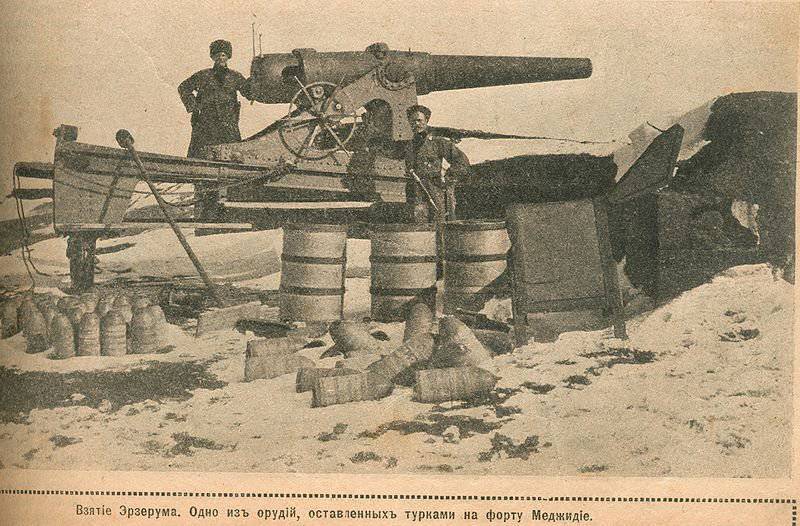
Trophy Turkish gun in Erzurum taken by Russian troops.
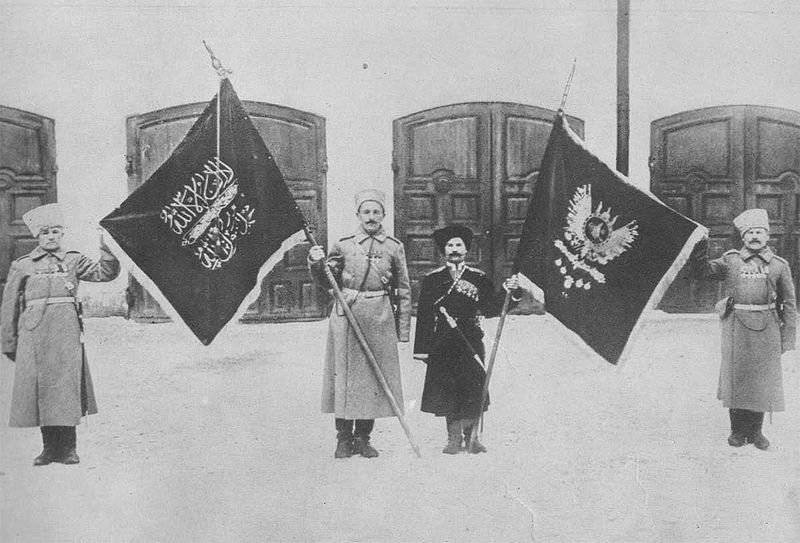
Captured Turkish banners in Erzurum.
To be continued ...
- Alexander Samsonov
- "Only he is worthy of this life, who is always ready to die." One of the best generals of Russia during the First World War, Nikolai Nikolayevich Yudenich
Strategic victory for the army of Yudenich near Erzurum
Victories of Yudenich's army near Trapezund and Erzincan
Removal from command of the Caucasian front. Yudenich's army march to red Petrograd
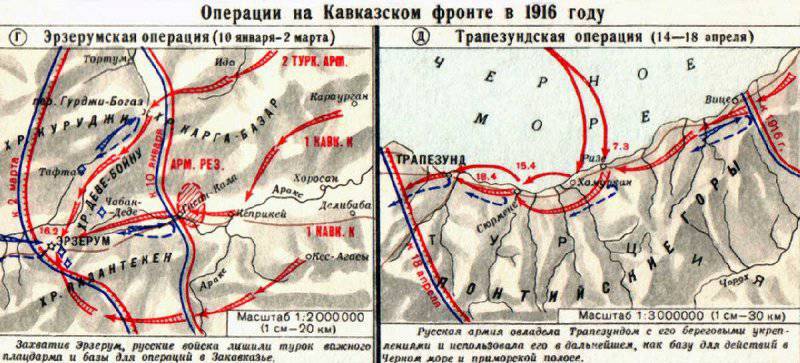
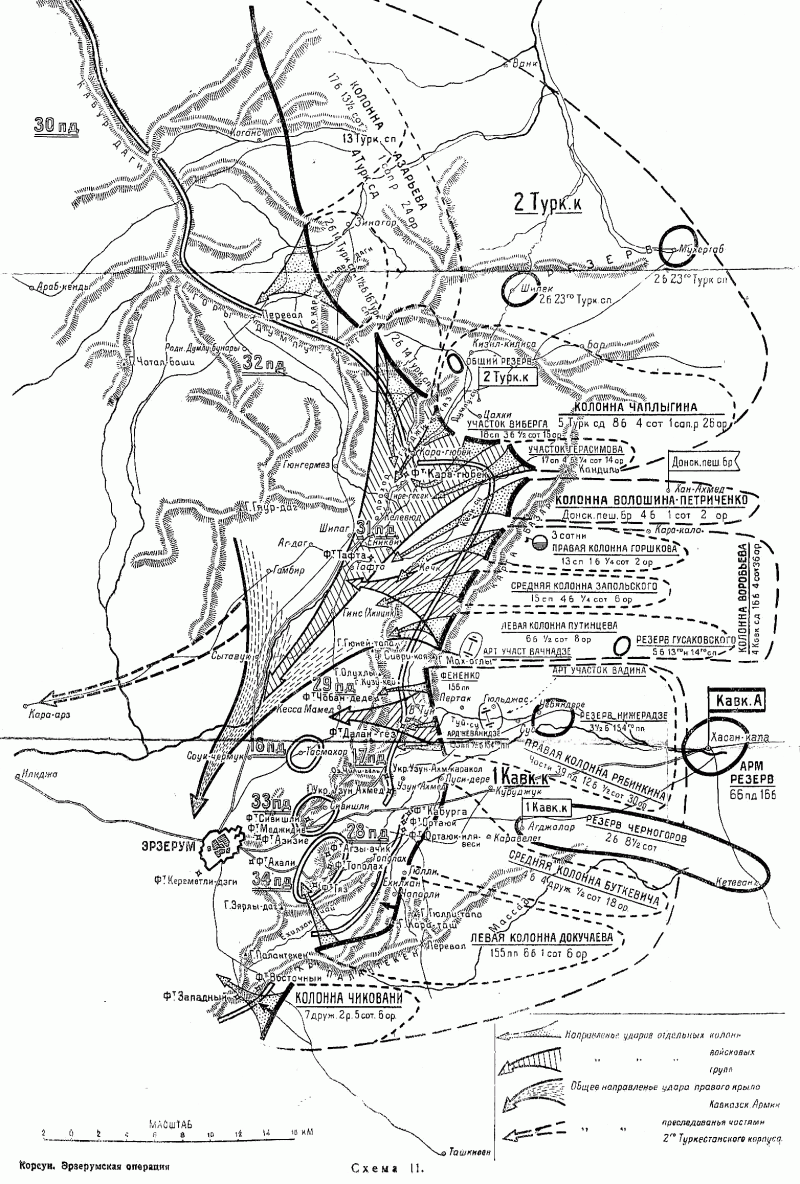
Information